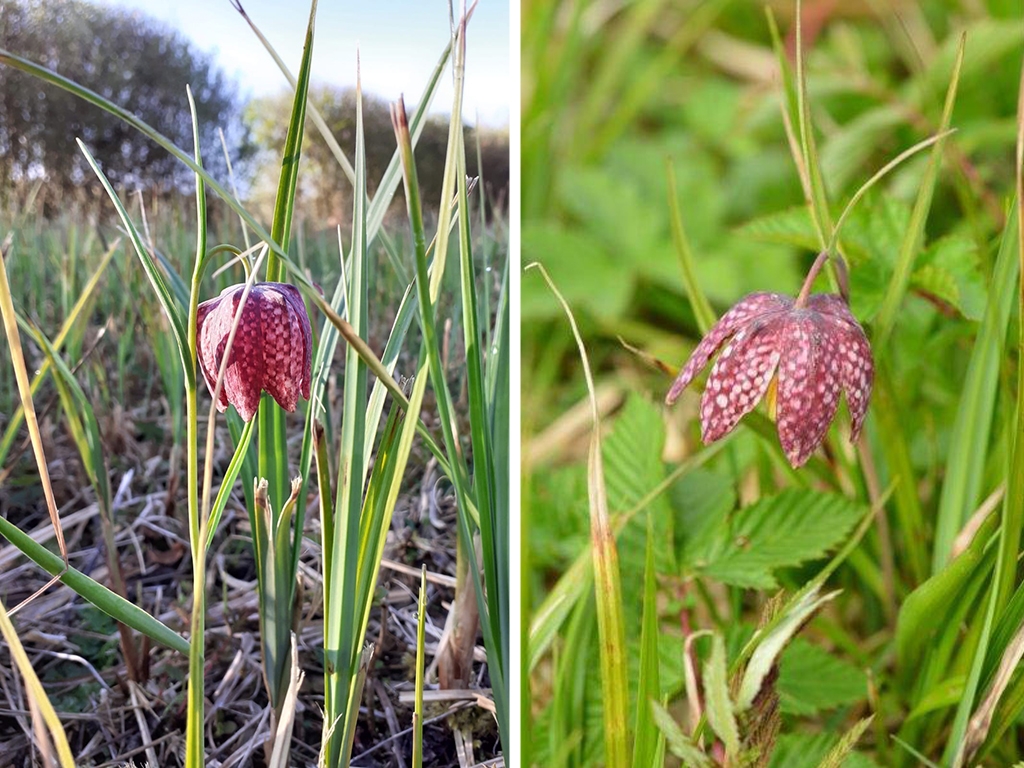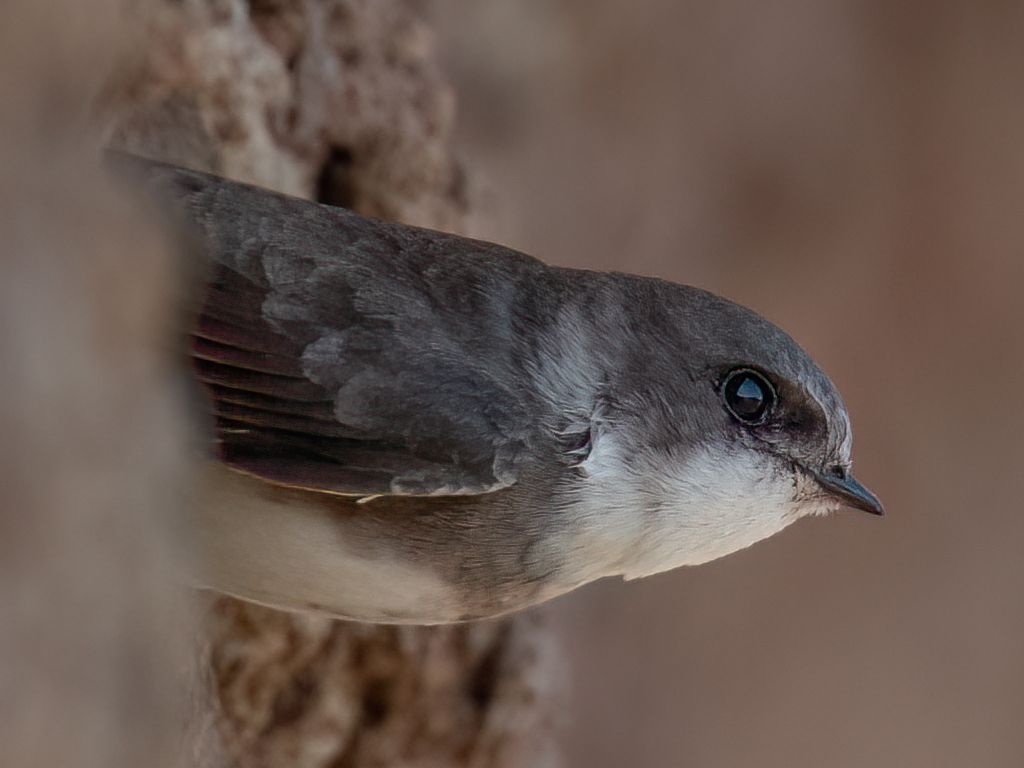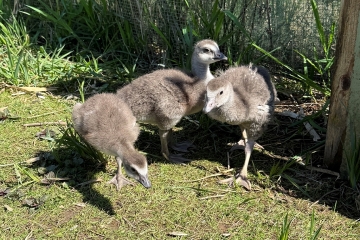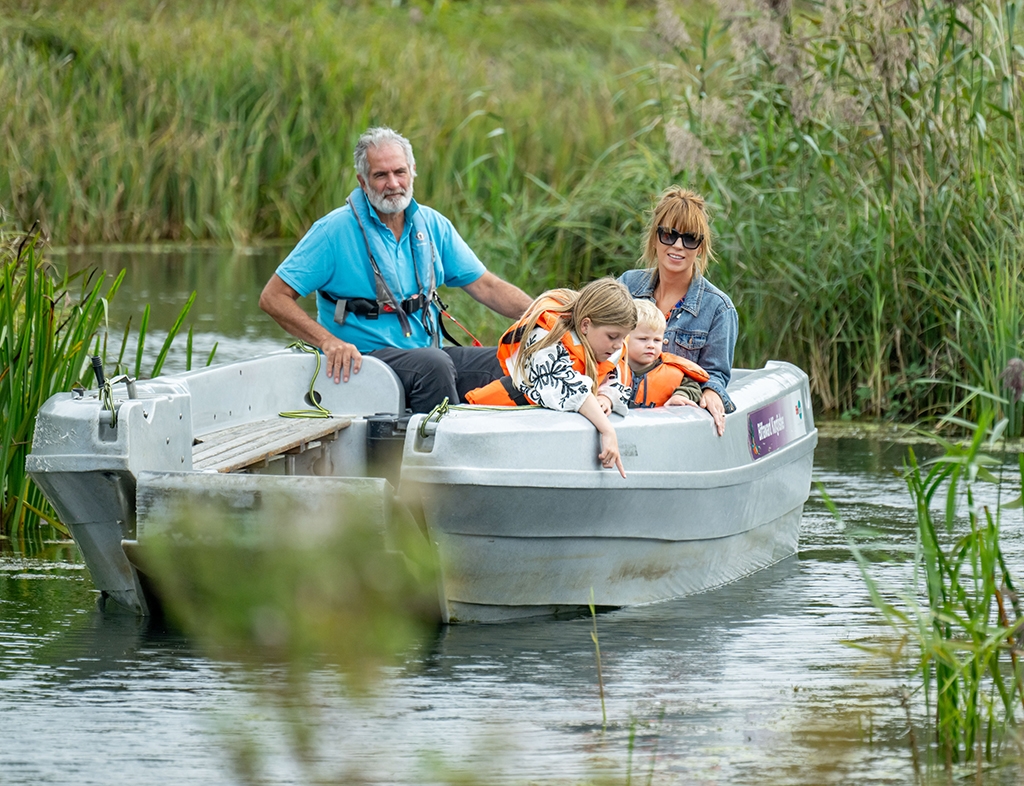Spring Wildlife Update
These first two weeks of April have been sunny with warmer days encouraging new life.
Spring is still in its early stages but we are seeing flowers blooming, nest-building sand martins, and ducklings hatching out on the wetlands. It's a vital time for wildlife as migrants return and fragile species enter their breeding seasons. Spring is an amazing time to find your wetland favourites and discover some new ones.
Flowers and Invertebrates
With April's beautiful sunny weather comes a flurry of flowers and insects! Ground ivy, cowslip, blackthorn, lungwort, snake’s-head fritillary, lady’s smock, marsh marigold, white and red dead nettle, the abundance of primrose and the bogbean that is just starting to flower, all give bee flies, hoverflies, bumblebees and a plethora of other invertebrates fantastic feeding opportunities.
Our Reserve Manager Suzi Lanaway found the most exciting invertebrate sighting so far this spring was a glow worm larva by the giant 'Nest' used for our visiting schools. Joel of the Learning Team spotted it while he was teaching our Generation Wild program with a school.
Suzi said: "Most of our glow worm sightings occur around the edges of our car park, and we look for during our evening bat walks. It’s great to see them inside our perimeter fence."

Sand Martins
Sand martin began arriving on Thurs 27 March. Numbers are building, with many investigating their favourite nest chambers. Reserve Manager Suzi Lanaway said: “Five of the nest chambers in the banks have been used every year for the past three years.”
Sand martins are already collecting nesting material so we chose to close the hide windows already. The Easter school holidays are early this April and are bringing in many visitors so keeping the windows closed will lessen the disturbance to the sand martins. We are hoping for an increase in the size of the colony from the record number of 83 sand martin nests were counted in annual autumn checks at WWT Arundel Wetland Centre last October.

Lapwing
There were eight lapwings onsite but only two pairs have stayed. One pair is sitting on eggs. Lapwings make shallow scrape nests in short vegetation offering them sight lines to watch for predators. They lay four to five eggs, mottled to look like small stones. Keep your fingers crossed for this pair.
Kingfishers
April can be a quiet time for kingfishers. If they are nesting we don't see them much. We had been seeing a female kingfisher around in March. We are watching the Kingfisher Bank on the Arun Riverlife lagoon to see if it will be used this year. We have been lucky for the last four years to be able to see a pair nest and raise their young at close quarters from the Discovery hide.
Oystercatchers
One pair of oystercatchers arrived in mid-March. The have been all over the site, but mostly at the Sand Martin Hide. They have been spending time on the roof of the hide so they could nest up there this year. They have in the past.
Warblers
The number of resident warblers (Cetti's warblers and chiffchaffs) have been boosted by migrants, all singing loudly! We are seeing and hearing more blackcaps and a couple of early sedge and willow warblers appearing over the last week. If you want to witness early morning birdsong why not sign up for one of our Dawn Chorus Walks this spring? Details are here.

Ducklings, Goslings, and Chicks
The Reserve team counted 54 mallard ducklings with 7 different female mallards on Sunday 6 April. Mallard ducklings are now appearing in large numbers, which gives some of them better chances of survival. Numbers will dwindle as there are many carrion crows and predatory herring gulls around as well and mallards aren't the most attentive parents.
Several families of greylag gosling have started appearing around the site. Watch for them nibbling the grass in the picnic area, especially in the afternoons.
We have also spotted families of moorhens and coots around the site. Moorhens have a couple of broods a year and some of these youngsters will remain with the families when they are juveniles to help raise the next brood.
Slow worms and grass snakes
These warmer days mean that reptiles are now on the move. Grass snakes and slow worms have seen sun basking on paths. This tangle of a slow worm was found warming itself under one of the refugia (survey tins) in our Black Rabbit Triangle area. Two grass snakes were spotted on Aprils survey on Sat 12 April - one in the woodland loop in a tree stump and another under a survey tin parallel to the boat safari. Grass snakes have unique banding on their 'necks' which we photograph to ID them. The first snake was new but the second was last spotted in 2015! They can live 15 - 25 years in the wild.
Cattle Egrets
We are seeing cattle egrets around in the mornings and they are sporting an orange tinge on crest and back feathers that is their breeding plumage. No nesting activity yet but if you remember the cattle egrets nested at Arundel for the first time last autumn.
Ready to visit?
If you've been inspired to explore Arundel Wetland Centre, find out more and plan your visit online.
Plan your visit
Ready to visit?
If you've been inspired to explore Arundel Wetland Centre, find out more and plan your visit online.
Plan your visit



